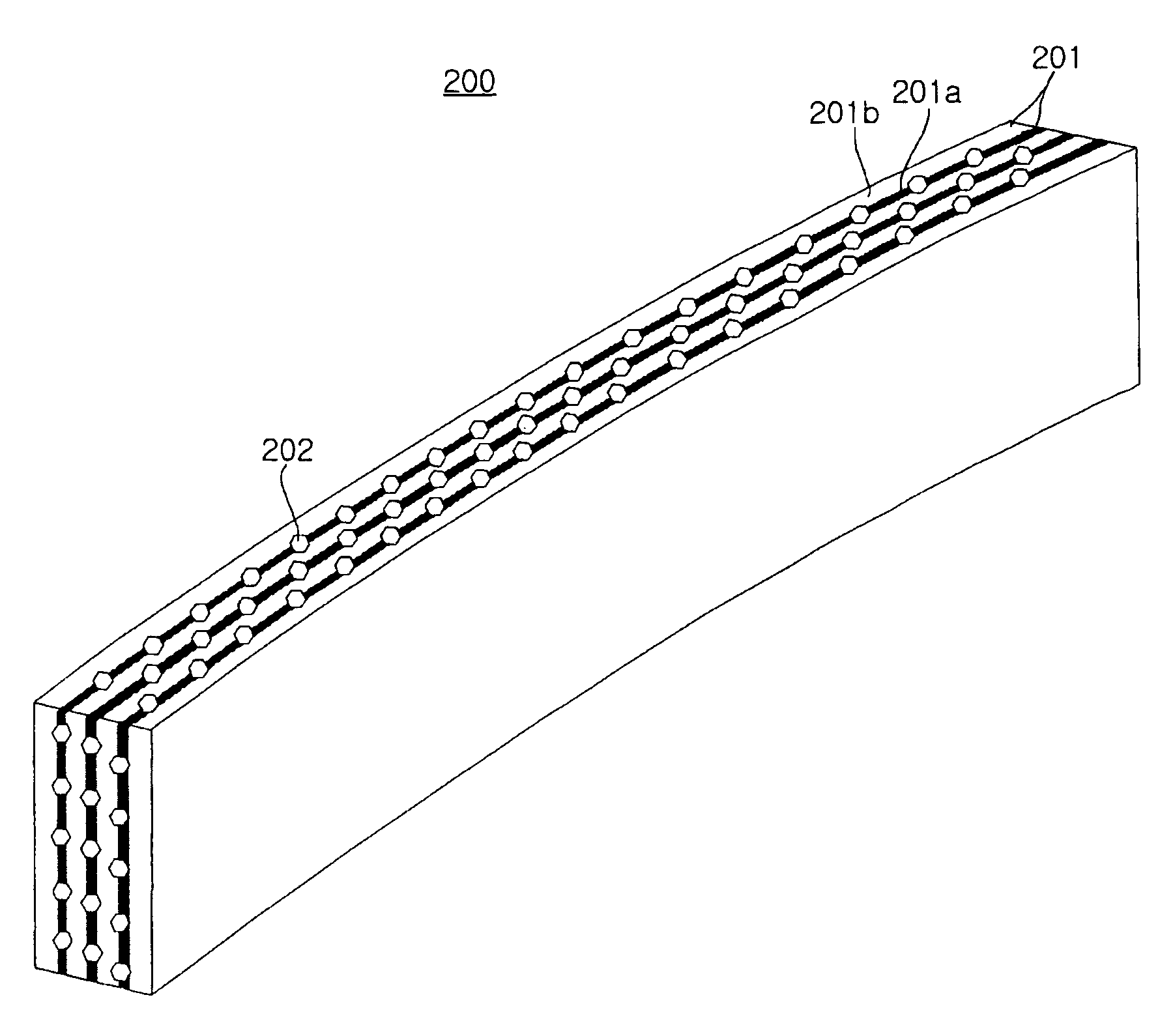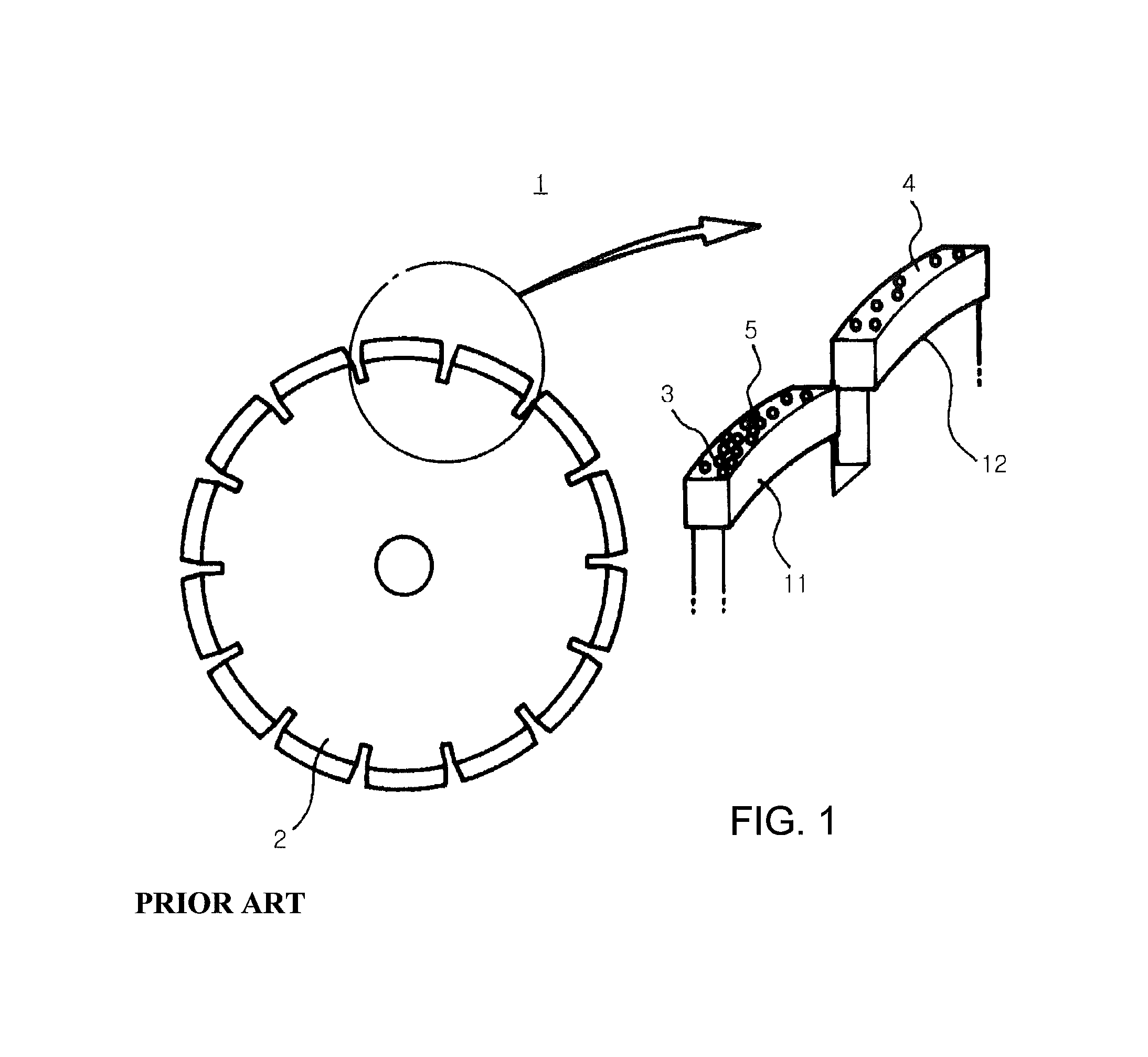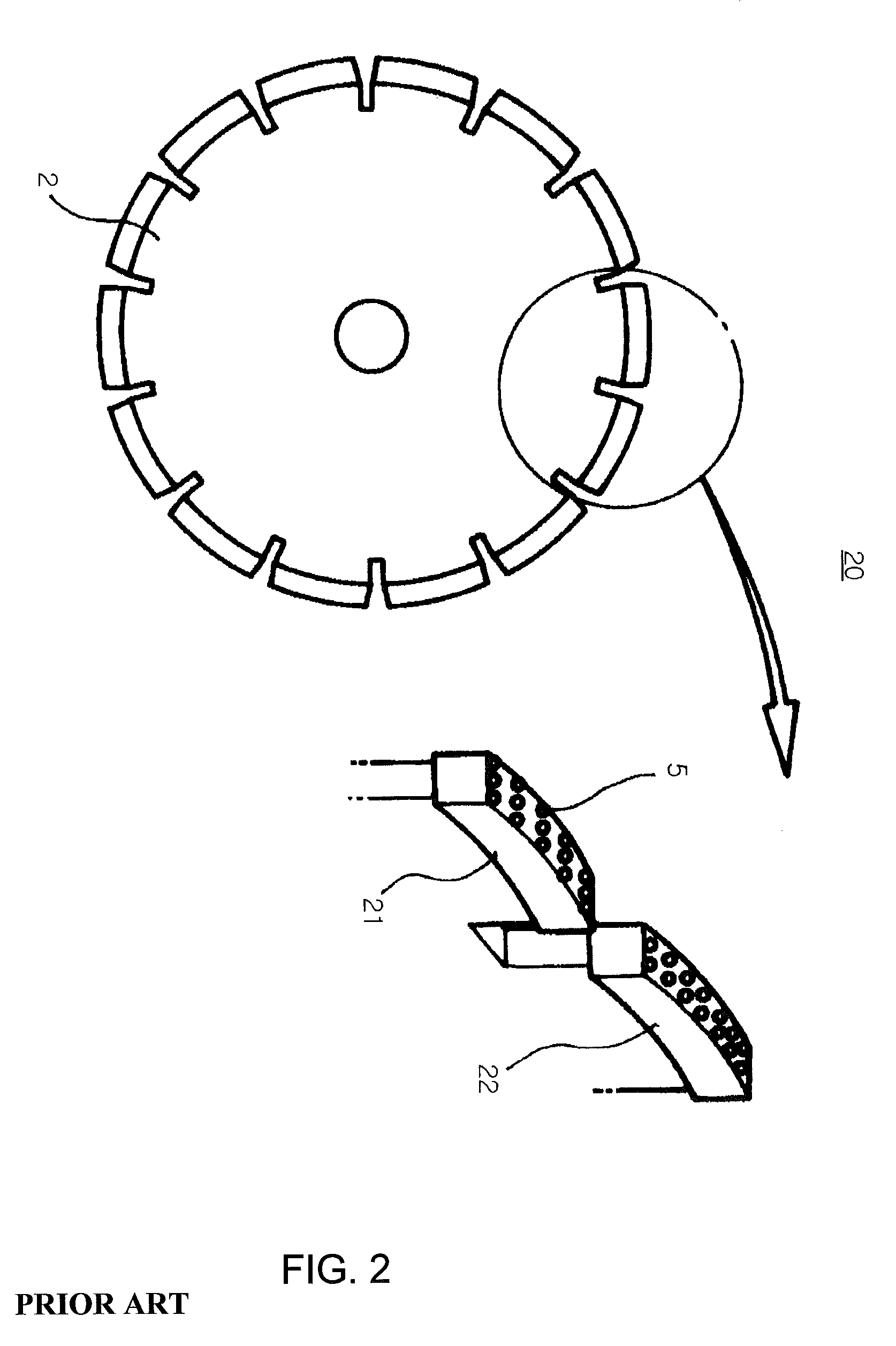Cutting segment, method of manufacturing cutting segment, and cutting tool
a cutting tool and cutting technology, applied in the direction of gear teeth, manufacturing tools, manufacturing apparatus, etc., can solve the problems of deteriorating cutting efficiency of cutting tools, reducing cutting efficiency of diamond particles, and reducing life span, so as to reduce manufacturing costs, improve cutting capability, and simplify manufacturing process
- Summary
- Abstract
- Description
- Claims
- Application Information
AI Technical Summary
Benefits of technology
Problems solved by technology
Method used
Image
Examples
example 1
[0129]In order to investigate cutting capability and life span of a cutting tool according to the present invention, a cutting test was conducted for a saw blade (Inventive material 3) manufactured according to the present invention and for the other saw blade (Conventional material 2) manufactured according to the conventional method, and results of the test are shown in Table 2 as follows.
[0130]In Table 2, Inventive material 3 was manufactured by laminating four SK85 steel plates, each having a thickness of 0.5 mm, followed by arranging two metal preforms made of 100% Co between the steel plates and arranging a tape with diamond particles uniformly arranged between the metal preforms. Conventional material 2 was manufactured by mixing the diamond particles and the metal powders.
[0131]The diamond particles used in Example 1 were MBS 955 available from GE in the U.S.A.
[0132]Sintering was performed at a sintering temperature of 950° C. for 5 minutes by hot pressing.
[0133]For the cutt...
example 2
[0138]Changes in cutting time depending on the number of cutting cycles were investigated by a cutting test on the washed concrete using the saw blades of Inventive material 3 and Conventional material 2 of Example 1, and results of the test are shown in FIG. 10.
[0139]The term “cutting time” means the time taken for the saw blade to cut a workpiece one time in a cutting operation. The term “cutting one time” means that the workpiece having a length of 30 cm is cut one time in a predetermined depth.
[0140]As shown in FIG. 10, it can be appreciated that the saw blade of Inventive material 3 has a more reduced cutting time, a more stable tendency of the cutting time, and a more uniform capability than the saw blade of Conventional material 2.
[0141]As is apparent from the above description, according to the present invention, there are advantageous effects in that as the plate-shaped metal matrices are used instead of the powdered matrices when manufacturing the cutting segment, manufact...
PUM
| Property | Measurement | Unit |
|---|---|---|
| thickness | aaaaa | aaaaa |
| wt % | aaaaa | aaaaa |
| temperature | aaaaa | aaaaa |
Abstract
Description
Claims
Application Information
 Login to View More
Login to View More - R&D
- Intellectual Property
- Life Sciences
- Materials
- Tech Scout
- Unparalleled Data Quality
- Higher Quality Content
- 60% Fewer Hallucinations
Browse by: Latest US Patents, China's latest patents, Technical Efficacy Thesaurus, Application Domain, Technology Topic, Popular Technical Reports.
© 2025 PatSnap. All rights reserved.Legal|Privacy policy|Modern Slavery Act Transparency Statement|Sitemap|About US| Contact US: help@patsnap.com



